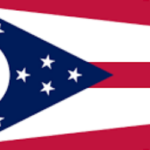
Published January 24, 2020
Many Americans think of Roe v. Wade as the defining Supreme Court decision on the issue of abortion. But a 1992 high-court decision actually governs abortion law. That ruling rested on fateful assumptions about the relationship between abortion and women’s equality. But in so doing, it has served to enshrine social and professional inequalities, which mothers must fight against every day.
In that case, Planned Parenthood v. Casey, a mere plurality of justices on the Court affirmed Roe, not because they thought it was good law but because of its “precedential force.” Justices Sandra Day O’Connor, Anthony Kennedy, and David Souter wrote that the “certain cost” of overruling Roe was just too extensive 19 years later—“even on the assumption that the central holding of Roe was in error.”
What were the costs that persuaded these justices to affirm a prior—potentially erroneous—constitutional decision? Judicial conservatives point to the joint opinion’s concern with the threat to the high court’s integrity and legitimacy in overturning long-established precedent. But another concern was just as operative: The plurality writes that the country so “relied” upon the right bestowed in Roe for women’s economic and social progress that the Court could not now stand in the way.
Click here to read the rest of this piece at The Atlantic’s website.












